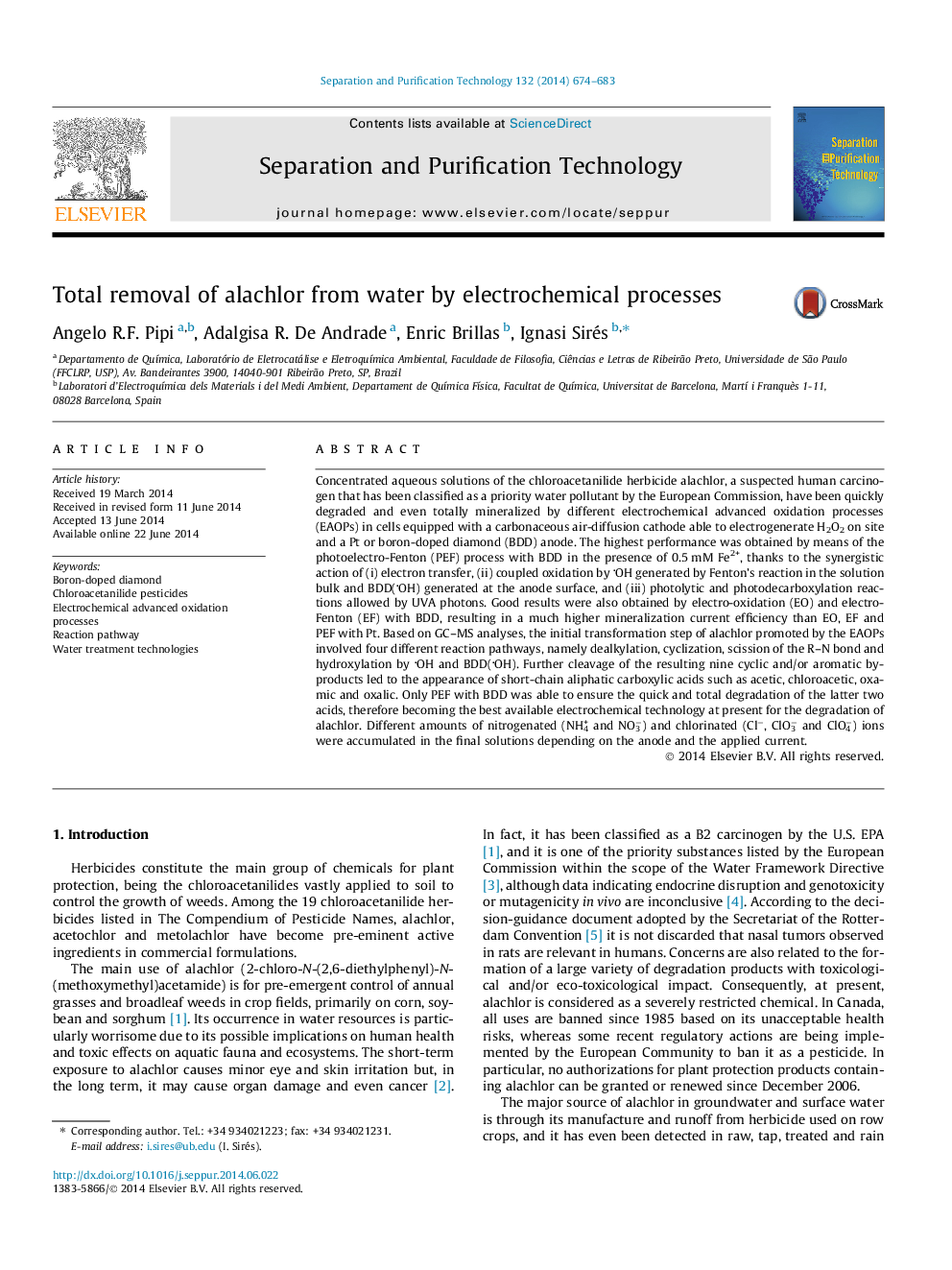| کد مقاله | کد نشریه | سال انتشار | مقاله انگلیسی | نسخه تمام متن |
|---|---|---|---|---|
| 641064 | 1456987 | 2014 | 10 صفحه PDF | دانلود رایگان |
• Quick decay of alachlor and total mineralization by photoelectro-Fenton with BDD.
• The different oxidation ability of OH and BDD(OH) is demonstrated.
• Four primary reaction pathways involving nine cyclic/aromatic by-products.
• The distribution of NH4+, NO3−, Cl−, ClO3− and ClO4− depends on anode and current.
• Short electro-Fenton followed by photolysis reduces the energy consumption.
Concentrated aqueous solutions of the chloroacetanilide herbicide alachlor, a suspected human carcinogen that has been classified as a priority water pollutant by the European Commission, have been quickly degraded and even totally mineralized by different electrochemical advanced oxidation processes (EAOPs) in cells equipped with a carbonaceous air-diffusion cathode able to electrogenerate H2O2 on site and a Pt or boron-doped diamond (BDD) anode. The highest performance was obtained by means of the photoelectro-Fenton (PEF) process with BDD in the presence of 0.5 mM Fe2+, thanks to the synergistic action of (i) electron transfer, (ii) coupled oxidation by OH generated by Fenton’s reaction in the solution bulk and BDD(OH) generated at the anode surface, and (iii) photolytic and photodecarboxylation reactions allowed by UVA photons. Good results were also obtained by electro-oxidation (EO) and electro-Fenton (EF) with BDD, resulting in a much higher mineralization current efficiency than EO, EF and PEF with Pt. Based on GC–MS analyses, the initial transformation step of alachlor promoted by the EAOPs involved four different reaction pathways, namely dealkylation, cyclization, scission of the R–N bond and hydroxylation by OH and BDD(OH). Further cleavage of the resulting nine cyclic and/or aromatic by-products led to the appearance of short-chain aliphatic carboxylic acids such as acetic, chloroacetic, oxamic and oxalic. Only PEF with BDD was able to ensure the quick and total degradation of the latter two acids, therefore becoming the best available electrochemical technology at present for the degradation of alachlor. Different amounts of nitrogenated (NH4+ and NO3−) and chlorinated (Cl−, ClO3− and ClO4−) ions were accumulated in the final solutions depending on the anode and the applied current.
Figure optionsDownload as PowerPoint slide
Journal: Separation and Purification Technology - Volume 132, 20 August 2014, Pages 674–683
